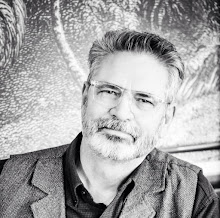The family is in trouble.
Family life is changing, and the changes are troubling. There’s no question that the nuclear family – the social unit of dad, mom and the kids – is showing signs of decline. No matter which metric we use – out-of-wedlock births, abortions, divorce, single-parent families —the numbers are depressing.
Or not.
There are two ways of looking at the dramatic changes we’ve seen in family life over the past several decades. Many people think of the family as an evolving social institution. In this view of the family, different isn’t worse, just different.
Take, for instance, divorce. Once rare, divorce is now commonplace. Since we all know someone who has been divorced or who has grown up in a family that has experienced divorce, the break-up of a family just isn’t the grand tragedy that it once was. The adults move on. Kids cope. Enough with the lamentations already.
The other way of looking at these changes in family life is that they constitute a kind of deterioration, a slipping away from the ideal. While only the most naïve would argue that there ever was a golden age of family life (nostalgia has a way of painting everything in a rosy hue), there is no question that family life now is far more fractured than it used to be. And this is not good. Family, says this view, is the one place where stability and support ought to be the norm, and when families fail, everyone loses – the kids, the exes, the in-laws, even society in general.
So what kind of social institution is the family? How much does it matter that family life is changing in these ways?
The origin of the family, as the story is told in the first chapters of ancient book of Genesis, begins with God creating all things and declaring His work to be “very good.” What God had created was wonderful and marvelous, “very good“ indeed.
That is, until He looked more closely at the man. Then God said something new, “It is not good that man should be alone.”
So God resolved to make a companion for the man. Oddly, God’s next act was not the creation of that companion but the creation of a felt need. The man, Adam, was alone, but he didn’t yet realize that he was alone. He became aware of that need only after God brought the animals to him, “to see what he would name them.”
So Adam became the world’s first scientist, classifying and naming the animals. As he named the animals, though, he slowly became aware of two things: first, they all came to him in pairs, they all had mates. And second, none of them was like him. There was a vast gap of quality between the man and all of the animals, even the most intelligent among them. And the man at last understood that he was, indeed, alone. There was no creature anywhere that he could call a companion.
That’s when he fell asleep. Weary and discouraged and lonely, he fell into a profound sleep.
When he woke up, he beheld a creature he had not yet named. She was clearly his equal, like him in so many ways. Yet – and he didn’t need long to perceive this – she was clearly not like him at all. (And that was before they had exchanged a word; after they lived together for a while, they both came to understand what every husband and wife discover. The internal, psychological differences between a man and a woman are even greater than the external, physical ones.)
In other words, God’s design included diversity from the outset. God didn’t make another creature exactly like the man; He made someone intriguingly different.
So which version of the family -- the social evolution model or the biblical model -- which model corresponds most closely to our experience? Which version of family life works best in the real world?
Conventional wisdom used to hold that the children of broken homes are resilient. They’ll adjust, find some way to cope. But long-term studies of children from broken homes are telling a different, darker story. The titles of books based on those studies are uniformly bleak: The Love They Lost: Living with the Legacy of our Parents’ Divorce (Stephanie Staal), The Unexpected Legacy of Divorce (Wallerstein, Lewis and Blakeslee), and Barbara Dafoe Whitehead’s The Divorce Culture. The statistics are grim: as a group, children whose parents split up are more likely to have problems later on – problems with substance abuse, academics, emotional issues and, most distressing, long-term relationships.
If you ask the children, if they get a vote, they’ll tell us that the changes in the family are not just benign social evolution. Children know from personal experience that the more dysfunctional the family, the harder life is.
What is true on a personal level is even more true on a sociological level: family life matters not just to individuals but to society. It’s not politically correct to make this observation, but it is obviously true nonetheless: Life in a community in which families are highly functional is better than life in a community in which families are dysfunctional. Statistics like divorce rate, out-of-wedlock births, abortions and teen pregnancies have social as well as personal impact. Everyone suffers when families suffer.
It’s true that people survive the loss of family; some even thrive despite a difficult and painful family background. But the exception only proves the rule: people have a basic, undeniable need for the kind of life that only a family can provide. This basic need for community and diversity isn't just incidental; it's how God made us.
So does it matter that the family is in distress?
Yes, we need family. We need family desperately because that’s how were designed.
Just ask the kids.
